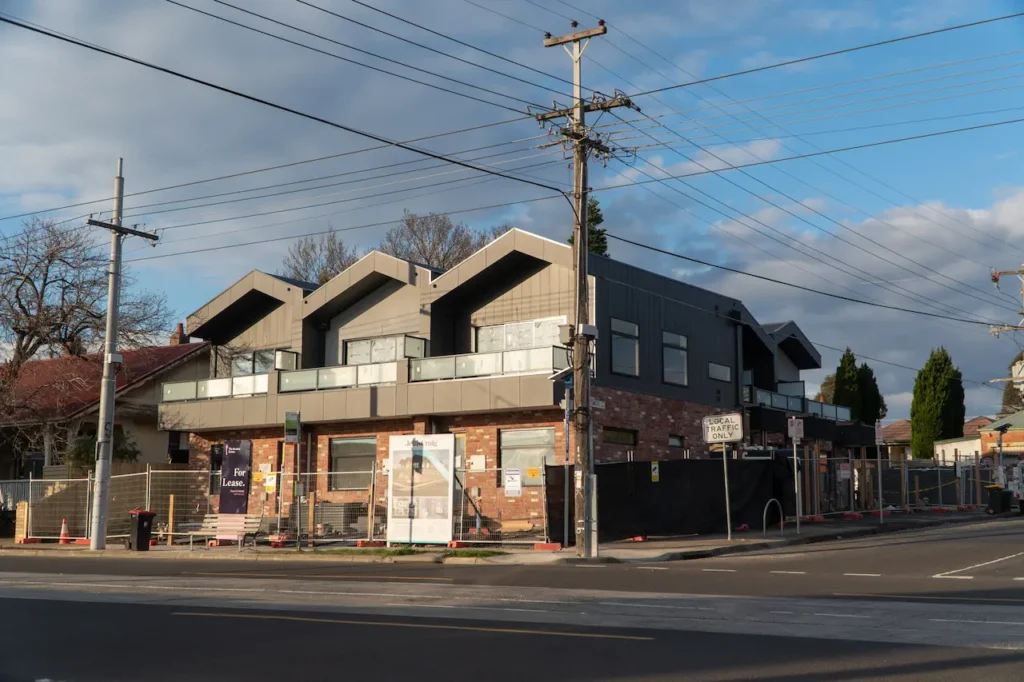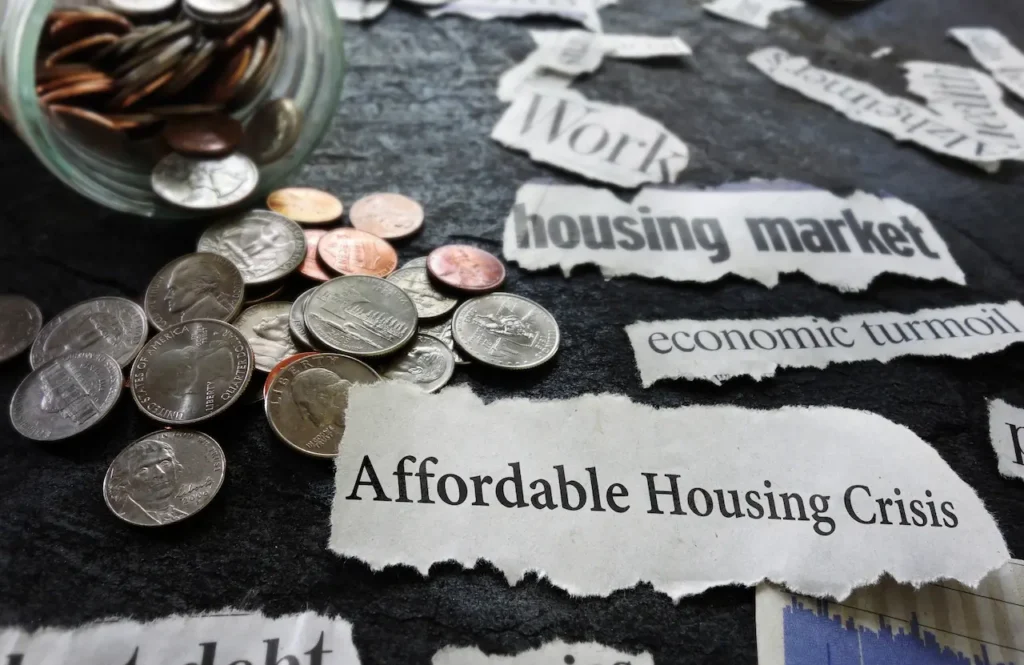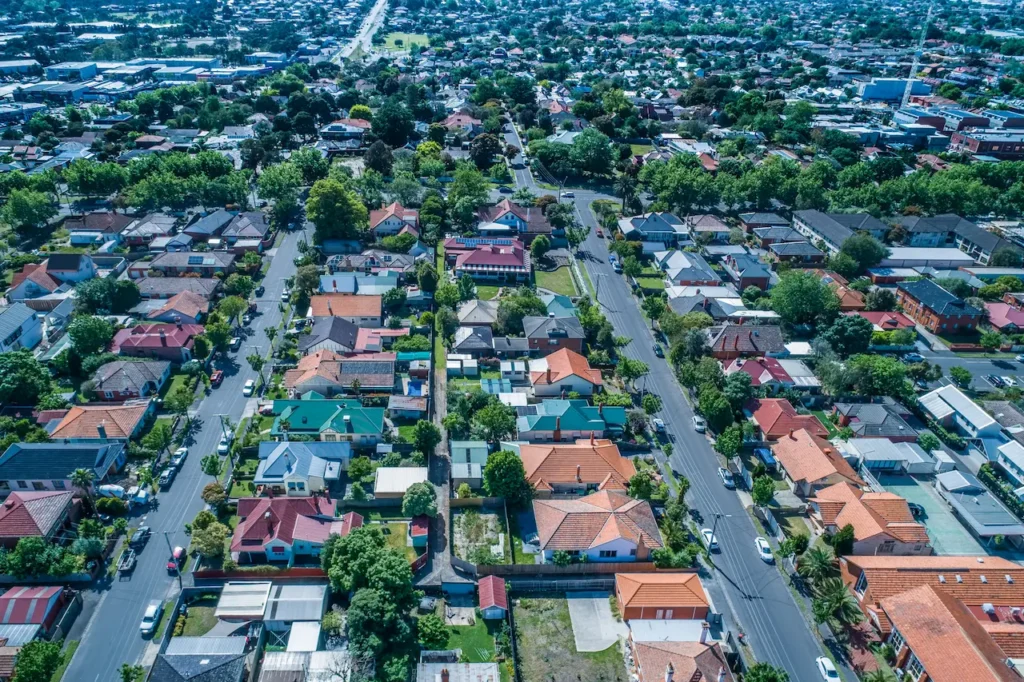Melbournes Housing Affordability Crisis
Melbourne is grappling with a severe housing affordability crisis, largely driven by a significant undersupply of dwellings. As one of Australia’s fastest-growing cities, the Victorian capital faces the pressing challenge of accommodating its rapidly increasing population, with dramatic implications for both current residents and future homebuyers. At RiskWise Property Research, our team is dedicated to investigating market trends and delivering critical insights that shed light on the complexities of Melbourne’s housing landscape. Our analysis highlights the urgent need for strategic solutions to address this ongoing crisis before it escalates further.

The Current State of Housing Affordability
Recent analysis by RiskWise Property Research reveals that Melbourne is facing a considerable undersupply of housing, particularly suitable for families. This lack of appropriate housing options is contributing to skyrocketing property prices, making homeownership increasingly unattainable for many. According to the latest data, the median price for houses in Greater Melbourne has reached $836,800, while units are priced at $554,571. However, the estimated cost for a 105-square-meter unit—more suitable for families—sits at an eye-watering $613,593, placing it out of reach for a majority of families.
The implications of this rapid population growth are significant. Melbourne is currently experiencing its highest-ever net annual population increase, with 125,000 people added in a single year. This growth rate of 2.7% (as reported for 2016-2017) indicates an urgent need for housing solutions that can meet the demands of an expanding populace. The Australian Bureau of Statistics (ABS) data reinforces this trend, showing that Melbourne is not only Australia’s fastest-growing city but also one of the most dynamic urban centers in the world.
The Role of Demographics
Understanding the demographics of Melbourne’s population is crucial in addressing the housing crisis. The city’s population is becoming increasingly diverse, with significant numbers of families, young professionals, and retirees all competing for limited housing options. This demographic complexity requires a range of housing types that cater to different household sizes and needs. Unfortunately, current market trends have led to a predominance of smaller units and high-rise developments, which do not cater adequately to larger households.
Furthermore, as Melbourne’s population grows, so does the demand for essential services such as schools, healthcare, and public transport. The strain on these services further exacerbates the housing issue, as families seeking proximity to quality amenities find themselves priced out of suitable neighborhoods. Without a strategic approach to urban planning that considers both housing and service delivery, Melbourne risks becoming a city where only the wealthy can afford to live near essential services.
The Impact of Government Planning Initiatives
The Victorian Government’s Plan Melbourne 2017-2050 aims to address these issues by facilitating the development of new housing in established areas. This initiative focuses on creating a city characterized by 20-minute neighborhoods—areas where residents can access jobs, services, and public transport within a short distance. The plan acknowledges the pressing need for a diverse range of housing types to cater to the varying needs of the population.
However, as RiskWise CEO Doron Peleg points out, the current supply of family-appropriate housing has not kept pace with demand. The sharp rise in dwelling prices in recent years underscores this imbalance, revealing a market that is unable to meet the needs of its growing population. “The temporary slowdown in the property market is not a sustainable solution to the housing affordability issue,” Peleg states. “Unless measures are undertaken to boost the supply of suitable dwellings, housing affordability will remain a critical challenge.”
Addressing the Mismatch in Supply and Demand
The issue of housing affordability is compounded by the mismatch between the types of properties being developed and the needs of the population. While there has been a notable increase in the construction of medium- and higher-density housing, particularly in middle-ring suburbs like Doncaster and Box Hill, these developments often do not cater to families looking for larger living spaces. Instead, many new apartments are smaller, with insufficient bedrooms to accommodate growing families, further exacerbating the supply crisis.
Peleg highlights this critical distinction: “While there is oversupply in the unit market, these properties are not appealing to owner-occupiers looking for larger spaces.” This mismatch in supply has contributed to the rising unaffordability of housing in Melbourne, as families are forced to either remain in inadequate living situations or seek properties well beyond their financial reach.
Economic Factors Influencing Housing Prices
Several economic factors also contribute to the rising unaffordability of housing in Melbourne. The impact of interest rates, for instance, cannot be understated. As the Reserve Bank of Australia adjusts rates in response to inflationary pressures, the cost of borrowing rises, further squeezing potential buyers’ budgets. Increased interest rates lead to higher mortgage repayments, which can deter prospective homeowners from entering the market, consequently reducing overall demand.
Additionally, broader economic conditions, such as employment rates and wage growth, play a critical role in housing affordability. While some sectors of the economy may be thriving, others may not be experiencing the same growth, leading to disparities in income levels across the population. Without a corresponding rise in wages to match housing price increases, many families find themselves trapped in a cycle of rental stress or unable to afford a home altogether.
The Impact of Investor Activity
Investor activity in the housing market also significantly impacts affordability. In a landscape where many investors target properties as vehicles for capital growth, the increased competition can drive up prices, making it harder for first-time homebuyers to enter the market. While investment can stimulate construction and development, the current environment has led to a focus on high-end developments that may not align with the needs of families seeking affordable housing.
Moreover, proposed changes to negative gearing and capital gains tax could further complicate the situation. If these policies are implemented, investors may shift their focus away from existing properties, leading to a potential decline in overall supply. This shift could exacerbate the affordability crisis, especially if there are no corresponding measures to encourage the construction of new, affordable dwellings.

The Need for Comprehensive Solutions
The path forward requires a comprehensive approach to address the multifaceted challenges of housing supply and affordability. As noted by Peleg, simply limiting negative gearing and capital gains tax without corresponding measures to increase housing supply could lead to further reductions in dwelling commencements. The correlation between housing supply and affordability was acknowledged as far back as 2008, when a Select Senate Committee on Housing Affordability in Australia noted that rising house prices reflect an inability to meet strong demand with adequate supply.
In the long run, increasing housing supply could stabilize prices. Historical data reveals that when rapid population growth was matched with record rates of home building, house prices remained relatively stable. To achieve this equilibrium, a strategic focus on increasing dwelling density in both middle-ring and outer suburbs is essential.
Recommendations for Increasing Housing Supply
To effectively tackle Melbourne’s housing affordability crisis, a series of measures must be implemented. Peleg advocates for increasing density along existing transport corridors, which is a cost-effective way to enhance accessibility to employment centers. Re-zoning initiatives and coordinated strategies between state and local governments can facilitate the development of new housing stock.
Incentives at all levels of government can further encourage developers to meet pre-approved housing targets. Streamlining the planning and approval processes will also be critical to accelerating new housing developments. This could include introducing fast-track approvals for developments that meet specific criteria, thereby reducing the bureaucratic delays that often hinder timely project completion.
Infrastructure upgrades, such as the significant funding allocated in the 2018 Federal Budget for projects like the Melbourne North East Link and the rail upgrades in Monash, are vital components of a broader strategy to support increased housing supply. These investments not only improve transportation but also enhance the overall livability of neighborhoods, making them more attractive for potential residents.
Promoting Sustainable Development Practices
In addition to increasing supply, it is essential to promote sustainable development practices that align with Melbourne’s environmental goals. This includes incorporating green building standards and sustainable design principles into new housing projects. By prioritizing environmentally friendly developments, the city can create vibrant, livable spaces that contribute positively to the community while addressing housing needs.
The Long-Term Outlook for Housing Affordability
The latest report from ANZ and CoreLogic reveals a troubling trend: housing affordability has decreased in 2023 due to simultaneous increases in property values, rental costs, and interest rates. As of September, the time required to save for a 20% deposit has risen to an average of 10 years nationally, with Sydney requiring a staggering 12.6 years. In Melbourne, while there has been a slight improvement in deposit saving times, the challenges remain significant.
As demand continues to outpace supply, particularly in the wake of high interest rates affecting new housing developments, the outlook for affordability is grim. According to CoreLogic, the gap between house and unit values has also widened, with house prices remaining at elevated levels compared to units. This shift poses additional challenges for first-time homebuyers who may find themselves increasingly priced out of the market.
Regional Housing Dynamics
Regional areas have also felt the impact of these dynamics, often experiencing sustained uplifts in purchase values since the onset of the pandemic. Contrary to the previous perception of regional markets as affordable alternatives to capital cities, the demand for housing in these areas has surged, further straining affordability. The average time to save a deposit for housing in regional Australia is rapidly approaching levels seen in metropolitan areas, complicating the broader housing narrative.
CoreLogic’s findings indicate that the regional Australian dwelling market has sustained a 44.4% increase in dwelling purchase values since the start of COVID-19, in contrast to a 26.4% uplift in capital city markets. This shift reflects changing preferences among homebuyers, with many seeking the perceived benefits of more space and lifestyle options outside urban centers.
Implications for Future Buyers
As the landscape of housing affordability continues to evolve, potential buyers must navigate an increasingly complex market. For many, the dream of homeownership may seem distant, and strategies for entry into
the market will need to adapt to the realities of rising costs and shifting dynamics.
In 2024, as the housing market grapples with the consequences of these trends, affordability is likely to worsen before it improves. The combination of high interest rates, limited new housing developments, and increasing demand could lead to further strain on the market. In this environment, innovative solutions and collaborative efforts among all stakeholders—including government, developers, and community organizations—will be crucial to pave the way for a more affordable and accessible housing future.

Conclusion: The Path Forward
At RiskWise Property Research, our commitment to investigating market trends and providing informed insights remains steadfast. The housing affordability crisis in Melbourne is a complex issue that demands a multi-faceted approach. By addressing the root causes of undersupply and advocating for comprehensive planning solutions, we can help pave the way for a more sustainable and accessible housing market.
The challenges are significant, but they are not insurmountable. Through collaboration and innovative thinking, we can create a thriving Melbourne where families and individuals have access to affordable housing options that meet their diverse needs. The time for action is now; we must unite as a community to ensure that Melbourne’s growth translates into real opportunities for all residents, laying the foundation for a prosperous and sustainable future. By working together, we can transform the narrative of housing unaffordability into one of inclusivity and accessibility, ensuring that everyone has the chance to call Melbourne home.

